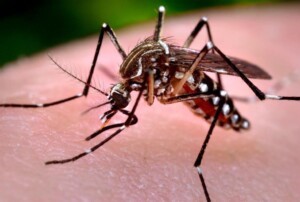Written by A. Hammouda: Mosquito-borne diseases pose a serious threat to public health worldwide. To prevent these diseases, effective mosquito control is essential. However, conventional methods of mosquito control have proven to be insufficient or unsustainable. Therefore, scientists have explored the possibility of genetically modifying mosquitoes to reduce their population or their ability to transmit pathogens. One of the most promising techniques is gene editing, which allows precise and targeted changes in the mosquito genome. A recent preprint reports the successful generation of sterile male Aedes aegypti, the vector of many arboviruses such as dengue, yellow fever, chikungunya, and Zika viruses.

See also:
Mosquito Gene Alteration to Combat Disease
Genetically Modified Mosquitoes Fighting Malaria
How To Better Fight Disease By Mosquito Genome Modification
How the new study targets mosquito control
The researchers generated a next generation CRISPR-based precision-guided sterile insect technique (pgSIT) for Aedes aegypti. This pgSIT works by simultaneously disrupting genes essential for female viability and male fertility during development to genetically generate sex-sorted and viable sterilized males.
This technique produces predominantly sterile males that can be deployed at any life stage. Using mathematical models and empirical testing, the researchers demonstrated that released pgSIT males can effectively compete with, suppress, and eliminate caged mosquito populations.
Usefulness for mosquito control
This versatile species-specific platform has the potential for field deployment to effectively control wild populations of disease vectors, safely curtailing disease transmission.
Some challenges remain before this pgSIT system can be applied in the field. One challenge is the production of the insects to be released, which requires a genetic cross, as in previous pgSIT systems. This necessitates a genetic sexing system that can be scaled up and is affordable. Although mechanical systems based on sex-specific traits have been developed, they may be too expensive for some settings. Therefore, alternative genetic sexing systems that are compatible with pgSIT are needed. Another possibility is to use a temperature inducible Cas9 strain in Aedes aegypti to create a temperature inducible pgSIT (TI-pgSIT) system, which would eliminate the need for genetic sexing.
A second challenge is to evaluate the survival and mating performance of the pgSIT males in the field, and to optimize their release strategy. A third challenge is to obtain regulatory approvals for the use of genetically modified insects, even though pgSIT is self-limiting and safe. However, this should not be an undefeatable obstacle.
Altogether, the study suggests the possibility of development of future such systems in related species. The self-limiting nature of pgSIT offers a controllable alternative to technologies such as gene drives that will persist and uncontrollably spread in the environment. Moving forward, pgSIT could offer an efficient, scalable, and environmentally friendly next-generation technology for controlling wild mosquito populations, leading to widespread prevention of human disease transmission.
Source:
Targeting Sex Determination to Suppress Mosquito Populations
See also:
Go to the News Board